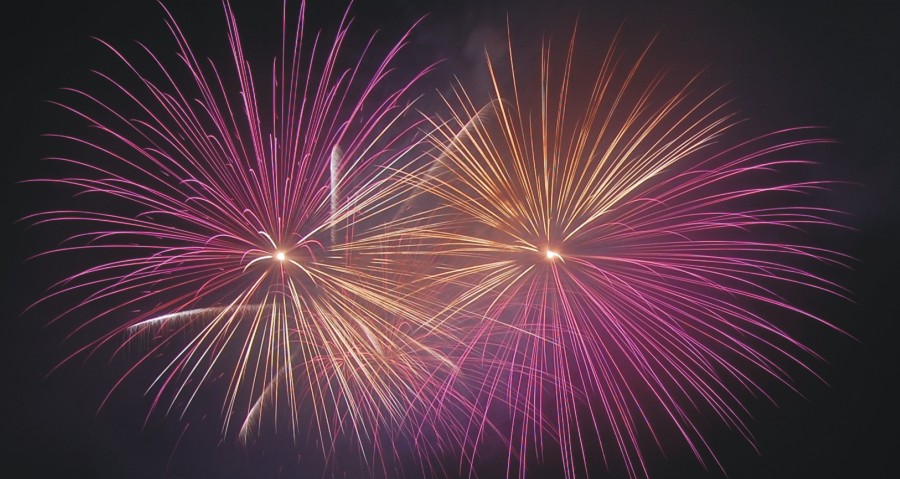General information about Shells
Calibre: shells generally range from 2″ to 6″ diameter but can be much larger.
Altitude: as a rough rule of thumb a shell will climb 100ft per 1″ of calibre, so a 3″ shell will burst at approximately 300ft.
General info: fired from a reinforced cardboard or GRP tube, a shell travels at a speed in excess of 200mph. At the peak of its trajectory, a bursting charge in the centre of the shell blows it apart, igniting its contents and producing large canopies of coloured stars.
Types of Shells
Hard Break: the mainstay of most firework displays, these shells generally create the most ooh’s and aah’s as the loud burst of the shell is followed by a growing “flower” of brightly burning stars.
Soft Break: a less powerful bursting charge gently splits open the shell casing and the contents “pour” out, producing very pleasing effects such as willows and horsetails. Ideal for quiet displays at venues where noise is an issue.
Peony: a peony shell produces a spherical burst where the stars do not leave a trail of sparks. Sometimes the shell will have a different coloured centre, called a pistil.
Chrysanthemum: a chrysanthemum shell also produces a spherical burst, but in this case each star leaves a trail of visible sparks, which has the result of producing a seemingly much fuller effect. Sometimes chrysanthemum shells will also have a different coloured center, called a “pistil”.
Colour Change: to create colour change affects the stars are rolled in one chemical compound and left to dry before being rolled in a second compound, producing a larger star. As each star burns through its outer layer to its inner layer it changes from one colour to another.
Half and half: when a “half and half” shell is made half of the shell is loaded with one colour of star on one side of the bursting charge, and a different colour on the other side. When the shell bursts and the stars ignite one colour is sent one way and the other colour is sent in the opposite direction, creating a spherical pattern of two halves.
Heart Shaped: when these shells are produced the stars are arranged around the bursting charge in a heart shape, so that when the shell bursts in the sky it produces a heart shape pattern. Because shells spin as they rise there is no control over which plane the shell will burst in, so we recommend firing at least three to increase the potential of them bursting in the correct orientation.









